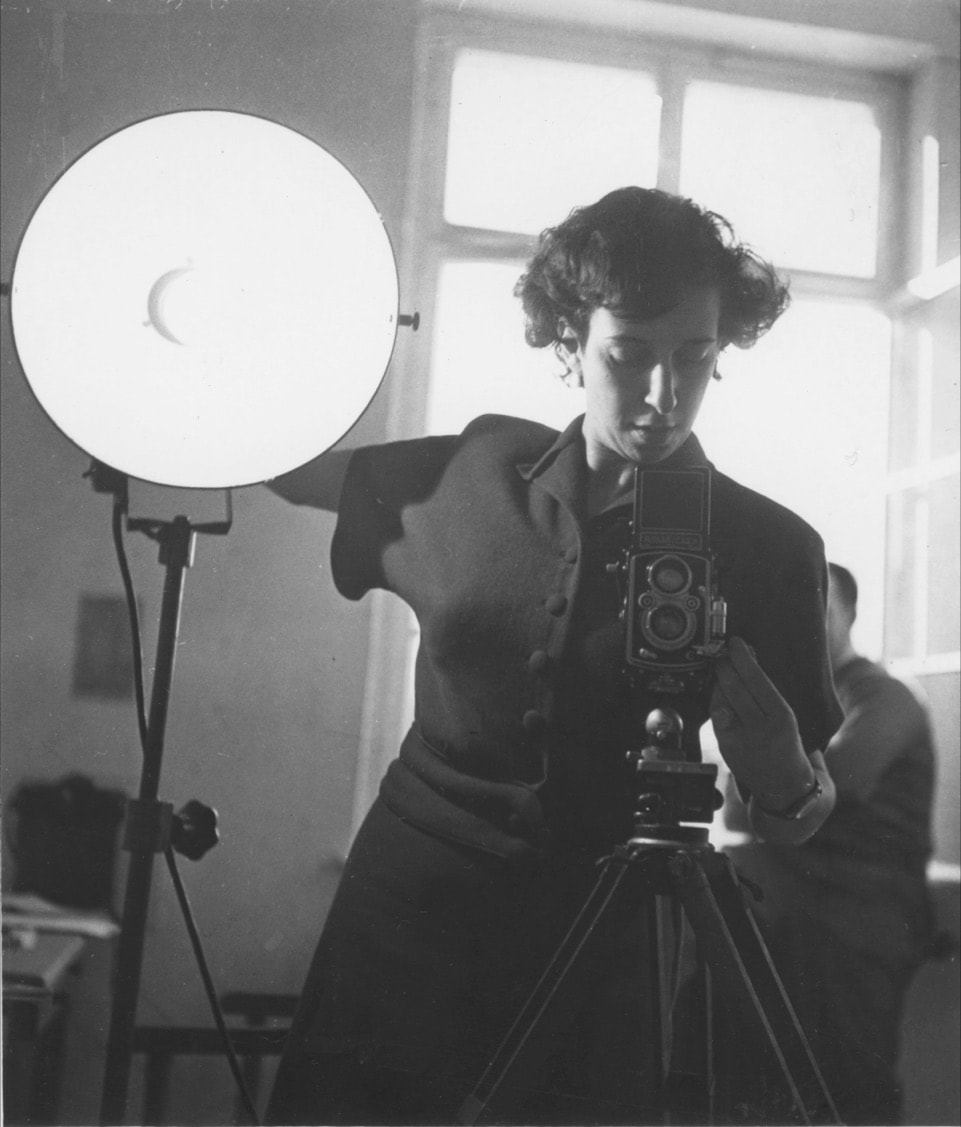
‘Stories of resilience and renewal’ – ANOTHER EYE: women refugee photographers in Britain after 1933

Portrait of Lore Lisbeth Waller, Studio, Leamington Spa, circa 1945 Courtesy of Anne Zahalka. Courtesy of Anne Zahalka
The opening photo of ANOTHER EYE is a street shot taken in Berlin by photographer Erika Koch (1915-2010). In it, pedestrians, cars and cyclists cross a junction, which, from the aerial perspective, resembles a blank canvas. Taken in 1930, the image seems to project the sense of optimism and forward momentum modernist and progressive art enjoyed under unguided liberalism that epitomised Weimar Berlin in the interwar years preceding Hitler’s rise to power. While Germany’s economy and political affairs were in disarray, leftist cultural and intellectual life was flourishing. But in the tumultuous years that followed, these dissident lives would once again fall apart, erased by the Nazi regime.
Lotte Meitner Graf portrait of Marian Anderson © Lotte Meitner Graf Archive
Koch was one of the 70,000 refugees who sought refuge in Britain from Nazi-dominated Europe in the 1930s. Among them was a surprising number of women photographers, as well as those who would later become photographers. As Dorothy Bohm (then a schoolgirl) parted with her parents, her father (an amateur photographer) handed her his Leica camera, whispering in a hushed tone: “it might be useful to you.” His words seem prescient now as Bohm, who is the only surviving photographer from the group, became an eminent photographer (today regarded as one of the doyennes of British photography), co-founding the Photographers’ Gallery in 1971. Her story perfectly encapsulates how some refugees, arriving with very little, end up cultivating much.
Although it’s easy to group these women as a cohort, their unique circumstances of exile and work in Britain defy a neat categorisation. Yet they did originate from similar backgrounds: mostly secular, middle-class Jewish. These were women who trained in photography at progressive art schools such as Dessau’s Bauhaus and Vienna’s Graphische Lehr und Versuchsanstalt; their visions steered by the visual aesthetics of German Bauhaus modernism and the New Objectivity (Neue Sachlichkeit) movement, which emerged after the First World War and emphasised a straightforward, focused realism.
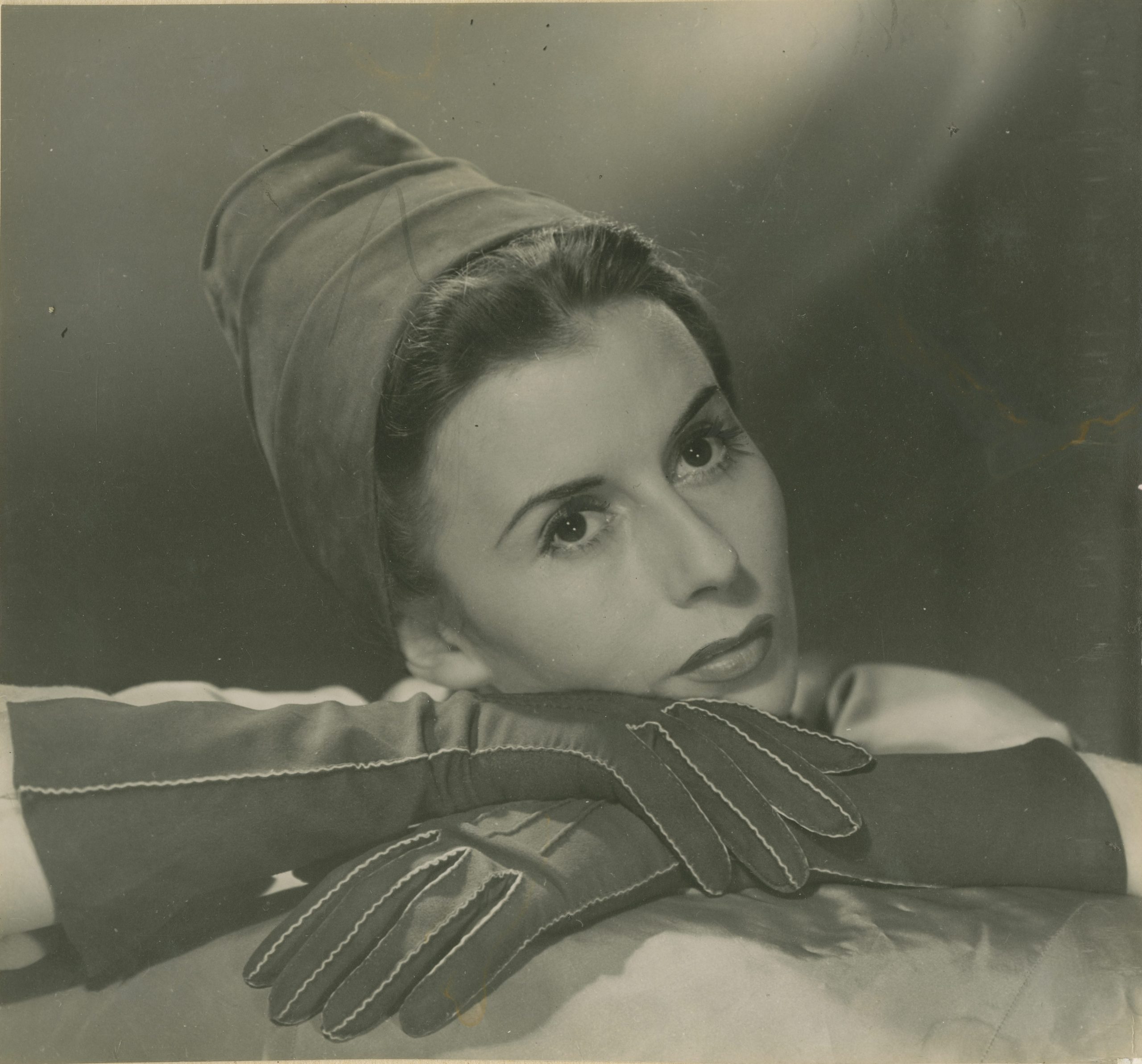
Bunyard Ader Studio, Vogue fashion photograph © Estates of Anneli Bunyard and Inge Ader
As photography became increasingly prevalent as a medium of visual communication, it offered a viable career choice for women living in Weimar-era Germany and Austria. In fact, between the wars, the majority of Vienna’s photography studios were run by Jewish women.
A photograph taken in 1930 shows a young Lisel Haas (1898–1989) in her darkroom labouring over chemical trays, waiting for an image to materialise from the liquid depths. Across Germany, Koch inspects prints in her own darkroom with an air of satisfaction. While these women likely didn’t know each other, their lives shared clear parallels that would eventually lead them to Britain.
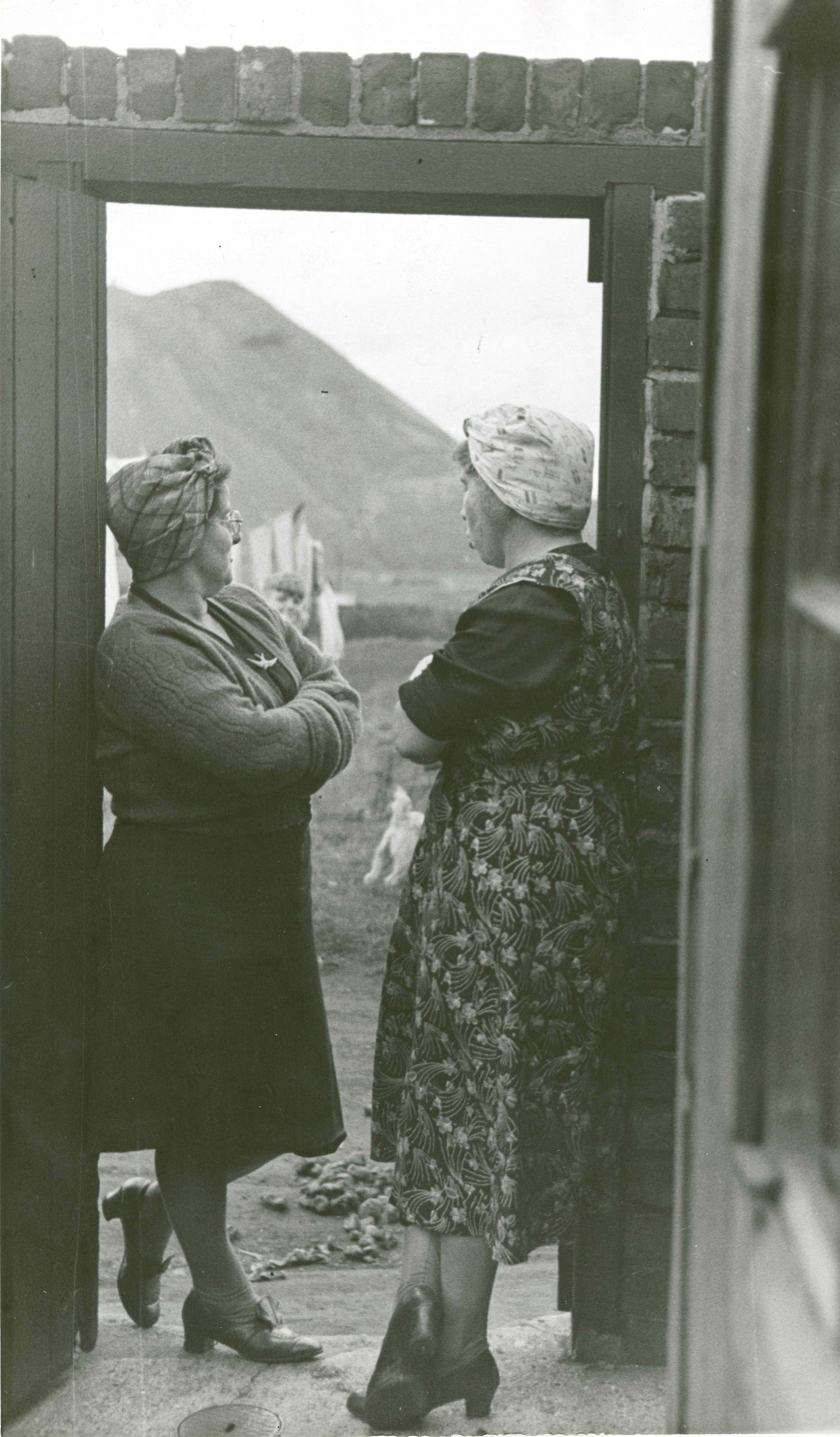
Elisabeth Chat, Two miners wives, Picture Post, 1948. © Elisabeth Chat, Report IPL Archive
Like all refugees fleeing Nazi Europe, these women suffered from the trauma of forced migration, loss of livelihood, language and identity. Haas was forced to fix a sign to her studio window stating that it was a ‘Jewish business’, and after the violence of Kristallnacht in November 1938, she left Germany for Britain. Others had their entire archives destroyed, and their businesses liquidated by Nazi bureaucrats. Many had family members who perished in concentration camps – or else vanished without trace.
Estranged from both their families and their jobs, these exiled women had to effectively start from scratch – and the road was not always smooth. German-speaking Jewish refugees were treated with suspicion and looked upon as potential enemies. After the Home Office confiscated her cameras, Koch wrote in her diary somewhat despairingly: “The cameras were the last thing I had.”
Seeing the work of these photographers, however, it’s evident that despite the traumatic circumstances of exile and wartime privations, they were undeterred. Many of them quickly resurrected their professional lives, setting up studios and creating new avenues of work.
Meanwhile, for those not already practicing photography before exile in Britain, photography was something they discovered after being forced to abandon their previous careers.
Hella Katz, Bodenwieser dance group on Friedrich Kiesler’s round stage, international exhibition of new theater technology, Wiener Konzerthaus, 1924 © Wien Museum
When Elsbeth Juda (1911-2014) arrived penniless in London in 1933, she had nothing but two suitcases and a violin. Struggling to find work, Juda suddenly conceived a brilliant idea: she would reinvent herself as a “darkroom boy” on Soho’s Dean Street, working under the alias ‘Jay’. It was there, in the red-lit Scaioni Studio that she first fell in love with photography.
Her path later crossed with fellow émigré and Bauhaus photographer Lucia Moholy, who taught her how to operate a cumbersome Gandolfi box camera halfway up a tree or a fire escape, to obtain geometric perspective. Before long, Juda rose to become one of her era’s most sought-after talents, shooting for publications such as Harpers Bazaar and running her own highly successful fashion photography studio in central London.
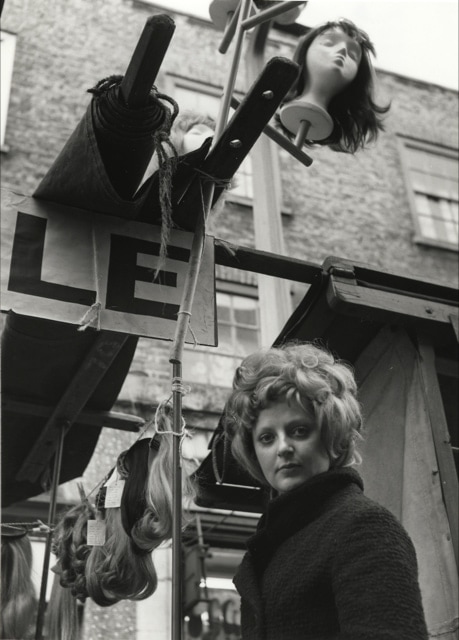
Dorothy Bohm, Chapel Lane, Islington, London c.1960–9. © Dorothy Bohm
In 1940, Juda helmed a magazine she started with her husband. Named The Ambassador, the publication – with its motto ‘Export or Die’ – was described as ‘probably the most daring and enterprising trade magazine ever conceived,’ known for its innovative design and adventurous editorial approach. Her dynamic photographs from this period are perhaps her most striking, showcasing her distinctive modernist eye. For the “cotton issue” she photographed supermodel Barbara Goalen wrapped in fabric on the rooftop of a Lancashire mill, while a salesman crouches awkwardly beside her pinning down the billowing train of her dress.
At the time, British portraiture was still stuck in the 19th century; it was stiff, time-consuming and often preoccupied with social status. Photographers tended to compose their photos like a painting, yet this group of photographers brought a novel way of seeing the world; a bold, experimental approach that was unseen before in Britain.
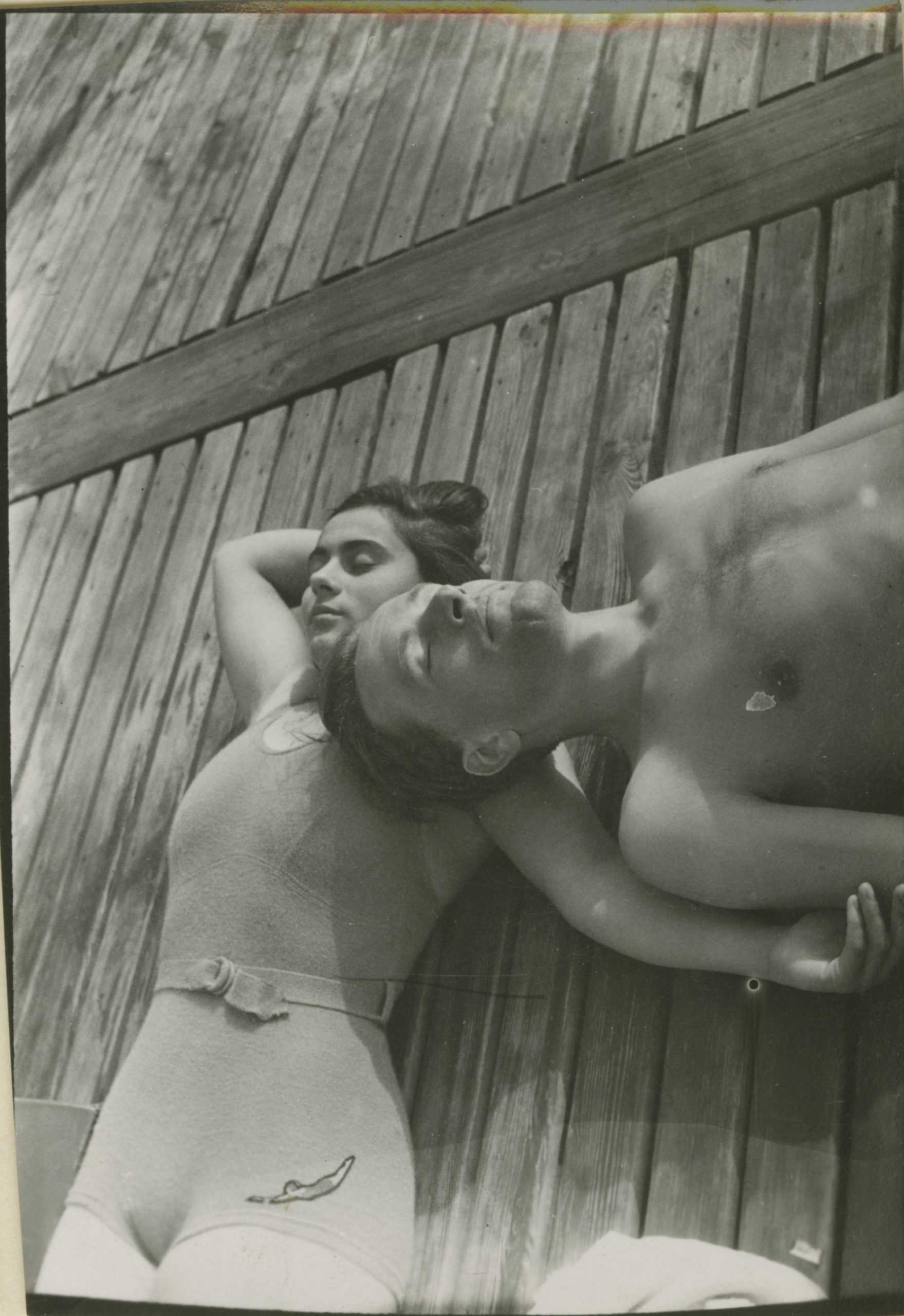
Erika Koch © Erika Koch archive, Anthea and Gillian Kennedy
Photography was also being harnessed as a force for social change. In the show, we encounter the work of Gerti Deutsch (1908-1979), who produced over sixty stories for Picture Post, a magazine instrumental in pioneering a new form of social documentary. Deutsch’s photo-essay ‘A Child’s View of War’ published in December 1938, centres on children’s perspectives of war. She captures them poring over hand drawn pictures of fighter jets, alongside an article which includes quotes from the children themselves. The result is a poignant reflection on war’s psychological impact, with an unexpected element of humour. One child says: “It doesn’t seem like war, does it? Where is the war? Are they fighting out at sea? What I’d like them to do, go over Germany and make a hole in Hitler’s head with a bomb.”
Portrait of Bill Brandt behind wooden camera used to photograph nudes
ANOTHER EYE shows the value of inviting a new perspective. Their stories demonstrate the crucial contribution of refugees and put forward a hopeful message of resilience and renewal, proving that even in times of adversity, people are still able to find their way and rebuild. In highlighting the work of these (mostly unrecognised) women refugee photographers, the exhibition is probably the first of its kind to explore their collective influence upon visual culture in Britain. Perhaps now in this period of uncertainty, we can look back and learn something from these remarkable women.
ANOTHER EYE: women refugee photographers in Britain after 1933 is on show at Four Corners gallery in Bethnal Green until Saturday October 3 2020 and can also be viewed online here.




